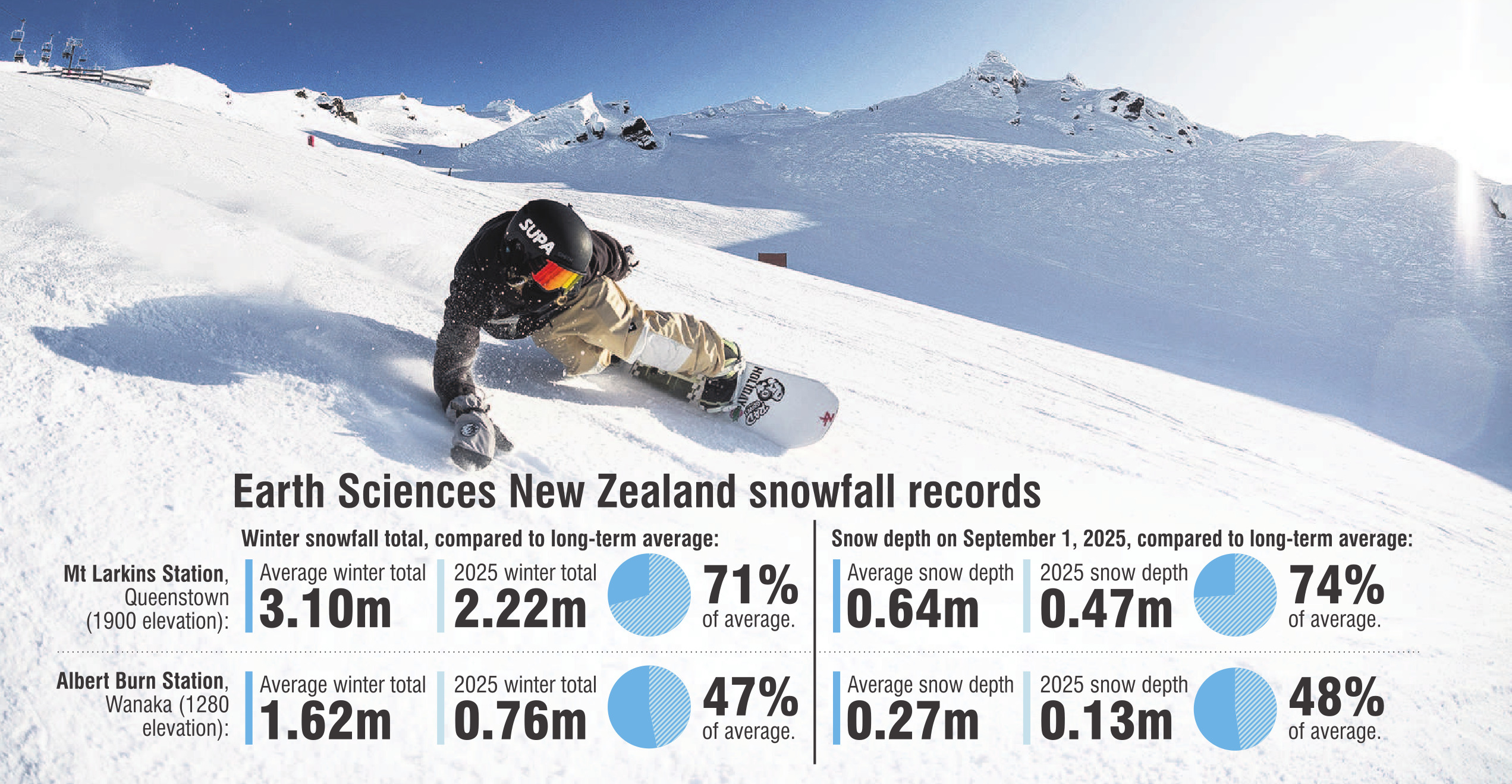
Earth Sciences New Zealand hydrological forecasting scientist Dr Jono Conway said winter snowfall was well below average for much of the country this year and several skifields were forced to close.
"It’s been an abysmal year for some areas.
"Our high elevation weather stations tell us it’s been a mixed bag for our alpine regions.
"Some places saw near-average snowfall, but what stands out is the number of low or record-low total snowfall readings."
He said snow played a significant role in both national water flows and the economy, because snowmelt contributed up to 50% of winter inflows to major hydroelectricity lakes.
Large areas of the South Island also used meltwater for irrigation in spring and early summer.
And winter tourism relied heavily on snow.
About 1.7 million people visited skifields in New Zealand in 2019.
Dr Conway said the Albert Burn weather station, near Lake Wanaka, had only 47% of its average winter total snowfall this year.
"So, we’ve got 14 years of records there and that is the second-lowest snowfall we’ve had there."
He said the Snow Farm ski resort had low snow level.
"They were just a little bit too hot, too low, and rainfall mid-season closed them for a few weeks.
"That was just as a result of pretty low snow and then they got a rainfall event that just melted their trails.
"They’ve got no ability to make snow and build that back up, even though there were nice cold, dry conditions."
The Mt Larkins weather station, near Queenstown, was also below average with 71% of its winter total this year.
"For instance, the average winter total would normally be 3.1m of snowfall, but this year it’s gone down to 2.2m.
"The lowest year we’ve had there was 1.8m, so this is about the fourth lowest in the 12 years we’ve been collecting data here."
In the north of the South Island, the situation was worse, he said.
"Crawford Knob and Murchison Mountains had their lowest winter snowfall totals on record, with 1.92m and 0.46m respectively."
And by the end of winter, the lack of snowfall meant Mt Cheeseman, Temple Basin, and Rainbow skifield areas were unable to open at all for the winter season.
He said the exception was Upper Rakaia, in mid-Canterbury, where large snowfall events during June set up the season well, and regular snowfall during July and August kept total winter snowfall around the long-term average.
"The lack of snow was due to predominantly settled, dry conditions through much of July and August.
"Early-season storms in the northern half of the island also brought heavy rain rather than snow.
"This was especially felt in Nelson-Tasman, where damaging floods devastated the region back in June and July."
He said computer modelling work, done over the past three decades, showed there appeared to be less snowfall each decade than the previous one.
"I think it’s fair to say that New Zealand’s had the best part of 1°C of warming, nationally, over the last century, and that’s stacking the odds against snowfall."
He said snow-making machines were helping many skifields to remain open.
"That’s really saved their bacon this season, I think."
Despite the decline in the amount of snowfall this winter, he said there was still a future for skiing in Otago.
"We won’t say for certain, but certainly this year’s demonstrated that you can get through a challenging season if it’s dry and cold.
"If it’s not raining, snow machines will get you through a below-average season."











